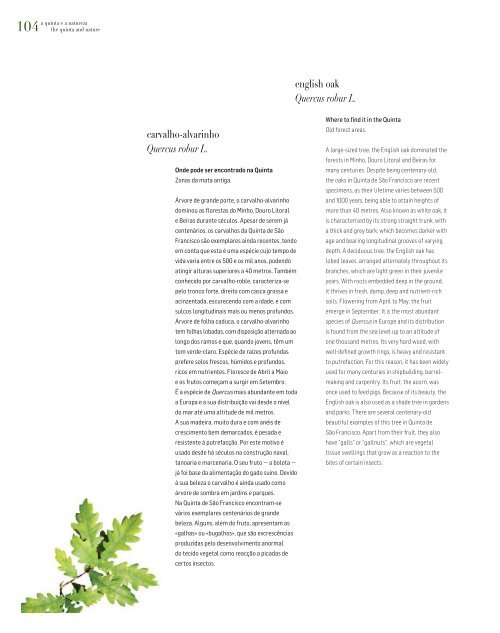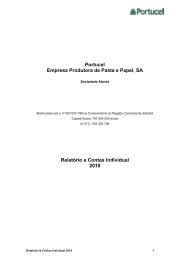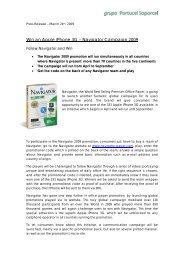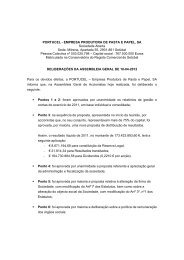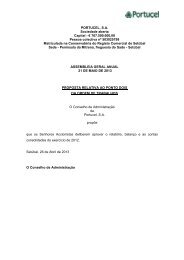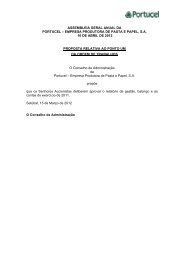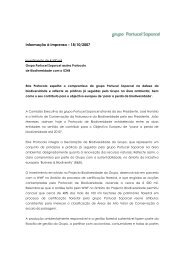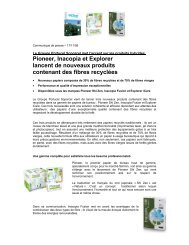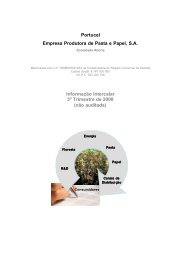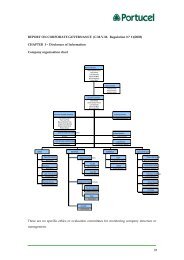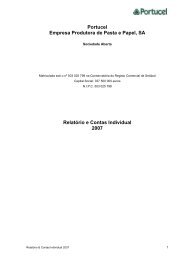Os Eucaliptos e as Aves da Quinta de São Francisco
Os Eucaliptos e as Aves da Quinta de São Francisco
Os Eucaliptos e as Aves da Quinta de São Francisco
Create successful ePaper yourself
Turn your PDF publications into a flip-book with our unique Google optimized e-Paper software.
a quinta e a natureza<br />
a quinta e a natureza<br />
104 the quinta and nature the quinta and nature 105<br />
carvalho-alvarinho<br />
Quercus robur L.<br />
On<strong>de</strong> po<strong>de</strong> ser encontrado na <strong>Quinta</strong><br />
Zon<strong>as</strong> <strong>da</strong> mata antiga.<br />
Árvore <strong>de</strong> gran<strong>de</strong> porte, o carvalho-alvarinho<br />
dominou <strong>as</strong> florest<strong>as</strong> do Minho, Douro Litoral<br />
e Beir<strong>as</strong> durante séculos. Apesar <strong>de</strong> serem já<br />
centenários, os carvalhos <strong>da</strong> <strong>Quinta</strong> <strong>de</strong> <strong>São</strong><br />
<strong>Francisco</strong> são exemplares ain<strong>da</strong> recentes, tendo<br />
em conta que esta é uma espécie cujo tempo <strong>de</strong><br />
vi<strong>da</strong> varia entre os 500 e os mil anos, po<strong>de</strong>ndo<br />
atingir altur<strong>as</strong> superiores a 40 metros. Também<br />
conhecido por carvalho-roble, caracteriza-se<br />
pelo tronco forte, direito com c<strong>as</strong>ca grossa e<br />
acinzenta<strong>da</strong>, escurecendo com a i<strong>da</strong><strong>de</strong>, e com<br />
sulcos longitudinais mais ou menos profundos.<br />
Árvore <strong>de</strong> folha caduca, o carvalho-alvarinho<br />
tem folh<strong>as</strong> lobad<strong>as</strong>, com disposição alterna<strong>da</strong> ao<br />
longo dos ramos e que, quando jovens, têm um<br />
tom ver<strong>de</strong>-claro. Espécie <strong>de</strong> raízes profund<strong>as</strong><br />
prefere solos frescos, húmidos e profundos,<br />
ricos em nutrientes. Floresce <strong>de</strong> Abril a Maio<br />
e os frutos começam a surgir em Setembro.<br />
É a espécie <strong>de</strong> Quercus mais abun<strong>da</strong>nte em to<strong>da</strong><br />
a Europa e a sua distribuição vai <strong>de</strong>s<strong>de</strong> o nível<br />
do mar até uma altitu<strong>de</strong> <strong>de</strong> mil metros.<br />
A sua ma<strong>de</strong>ira, muito dura e com anéis <strong>de</strong><br />
crescimento bem <strong>de</strong>marcados, é pesa<strong>da</strong> e<br />
resistente à putrefacção. Por este motivo é<br />
usado <strong>de</strong>s<strong>de</strong> há séculos na construção naval,<br />
tanoaria e marcenaria. O seu fruto — a bolota —<br />
já foi b<strong>as</strong>e <strong>da</strong> alimentação do gado suíno. Devido<br />
à sua beleza o carvalho é ain<strong>da</strong> usado como<br />
árvore <strong>de</strong> sombra em jardins e parques.<br />
Na <strong>Quinta</strong> <strong>de</strong> <strong>São</strong> <strong>Francisco</strong> encontram-se<br />
vários exemplares centenários <strong>de</strong> gran<strong>de</strong><br />
beleza. Alguns, além do fruto, apresentam <strong>as</strong><br />
«galh<strong>as</strong>» ou «bugalhos», que são excrescênci<strong>as</strong><br />
produzid<strong>as</strong> pelo <strong>de</strong>senvolvimento anormal<br />
do tecido vegetal como reacção a picad<strong>as</strong> <strong>de</strong><br />
certos insectos.<br />
english oak<br />
Quercus robur L.<br />
Where to find it in the <strong>Quinta</strong><br />
Old forest are<strong>as</strong>.<br />
A large-sized tree, the English oak dominated the<br />
forests in Minho, Douro Litoral and Beir<strong>as</strong> for<br />
many centuries. Despite being centenary-old,<br />
the oaks in <strong>Quinta</strong> <strong>de</strong> <strong>São</strong> <strong>Francisco</strong> are recent<br />
specimens, <strong>as</strong> their lifetime varies between 500<br />
and 1000 years, being able to attain heights of<br />
more than 40 metres. Also known <strong>as</strong> white oak, it<br />
is characterised by its strong straight trunk, with<br />
a thick and grey bark, which becomes <strong>da</strong>rker with<br />
age and bearing longitudinal grooves of varying<br />
<strong>de</strong>pth. A <strong>de</strong>ciduous tree, the English oak h<strong>as</strong><br />
lobed leaves, arranged alternately throughout its<br />
branches, which are light green in their juvenile<br />
years. With roots embed<strong>de</strong>d <strong>de</strong>ep in the ground,<br />
it thrives in fresh, <strong>da</strong>mp, <strong>de</strong>ep and nutrient-rich<br />
soils. Flowering from April to May, the fruit<br />
emerge in September. It is the most abun<strong>da</strong>nt<br />
species of Quercus in Europe and its distribution<br />
is found from the sea level up to an altitu<strong>de</strong> of<br />
one thousand metres. Its very hard wood, with<br />
well-<strong>de</strong>fined growth rings, is heavy and resistant<br />
to putrefaction. For this re<strong>as</strong>on, it h<strong>as</strong> been wi<strong>de</strong>ly<br />
used for many centuries in shipbuilding, barrel-<br />
making and carpentry. Its fruit, the acorn, w<strong>as</strong><br />
once used to feed pigs. Because of its beauty, the<br />
English oak is also used <strong>as</strong> a sha<strong>de</strong> tree in gar<strong>de</strong>ns<br />
and parks. There are several centenary-old<br />
beautiful examples of this tree in <strong>Quinta</strong> <strong>de</strong><br />
<strong>São</strong> <strong>Francisco</strong>. Apart from their fruit, they also<br />
have “galls” or “gallnuts”, which are vegetal<br />
tissue swellings that grow <strong>as</strong> a reaction to the<br />
bites of certain insects.


